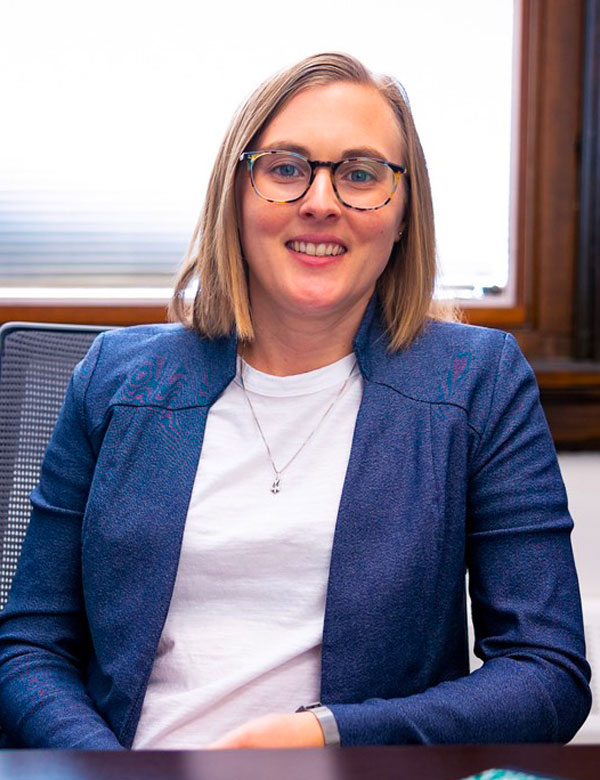
Trial-and-error separations could be replaced by quantitative and predictive methods, CWRU researchers find
The process of separating useful molecules from mixtures of other substances accounts for 15% of the nation's energy, emits 100 million tons of carbon dioxide and costs $4 billion annually.
Commercial manufacturers produce columns of porous materials to separate potential new drugs developed by the pharmaceutical industry, for example, and also for energy and chemical production, environmental science and making foods and beverages.
But in a new study, researchers at Case Western Reserve University have found these manufactured separation materials don't function as intended because the pores are so packed with polymer they become blocked. That means the separations are inefficient and unnecessarily expensive.

Lydia Kisley, Ambrose Swasey Assistant Professor of physics and chemistry at Case Western Reserve, used what is known as single-molecule microscopy to find that solutions containing molecules of interest mainly diffused and adsorbed around the outer edge of the porous materials, leaving the center almost entirely unused. The research will be published Feb. 14 in the journal Science Advances.
Porous materials that aren't porous
"These materials are marketed as 'fully porous,' but they aren't," said Kisley, who led the work. "We were really surprised by this. Why isn't this material working the way it was designed and is being sold to work?"
Kisley, along with colleagues Professor Burcu Gurkan and Associate Professor Christine Duval, from the Case School of Engineering's Department of Chemical and Biomolecular Engineering, wanted to find out why.
Seeing with a microscope
Single-molecule fluorescence microscopy, a specialized technique that allows scientists to visualize and analyze the behavior of individual molecules, allowed Kisley to see the molecular dynamics at the nanoscale.
"We use light to be able to observe individual molecules," she said, "shining a bluer laser to get the molecules to fluoresce in red."

Gurkan and a postdoctoral researcher in her lab, Muhammad Zeeshan, first tested the materials as specified by industry, not under the solution conditions they're actually used, and found they tested as advertised by the manufacturers.
But by imaging the same materials under conditions used in actual separations, Kisley found that the manufacturers were adding so much cellulose material to capture molecules that it actually blocked the pores. Using a solvent to remove extra material improved the potential separations.
Improving separations for industry
Kisley hopes their findings will help manufacturers design more efficient separations. "Half the cost of bringing a new drug to market is trying to separate molecules, a process which may be done between 10 and 20 times for one substance," she said.
The single-molecule microscopy technique can show how separators actually work and predict their performance. If adopted by industry, this could eliminate the trial-and-error methods now used in separation science, she said.
"Maybe you could get more efficient separations and eliminate an entire step," she said. "Think of the monetary and time savings. We could converge faster on the successful drug to help treat disease."
Kisley cited Ricardo Monge Neria, a Case Western Reserve graduate student in physics, for leading the experimental research and writing the published paper.
Rachel Saylor, an associate professor of chemistry and biochemistry at Oberlin College, also collaborated on the study, along with researchers at the Case School of Engineering Swagelok Center for the Surface Analysis of Materials.






